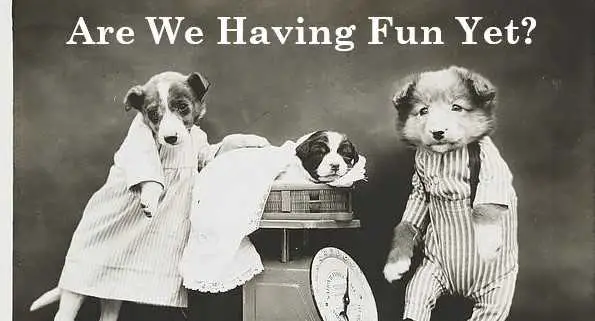
I used to collect old photographs and postcards from the late 1800s/early 1900s and especially liked silly animal pictures. The photos were usually a bit faded, and I don’t think I ever really looked into the eyes of the various critters who were immortalized in the cute photos.
Recently, my feeling about the photos changed completely when I came across an online article from The Atlantic titled “Cats and Dogs Dressed as People, 100 Years Ago.”1 The article featured crisp black and white photos from the U.S. Library of Congress collection of “cute-animal photography” by Harry Frees taken around 1914. The Atlantic writer praised the photos, saying their “humor and appeal is timeless.”1 In the starkness of the article’s full-screen images, I found the photos of animals posed in unnatural positions to be disturbing and thought the puppies and kittens looked dazed or exhausted.
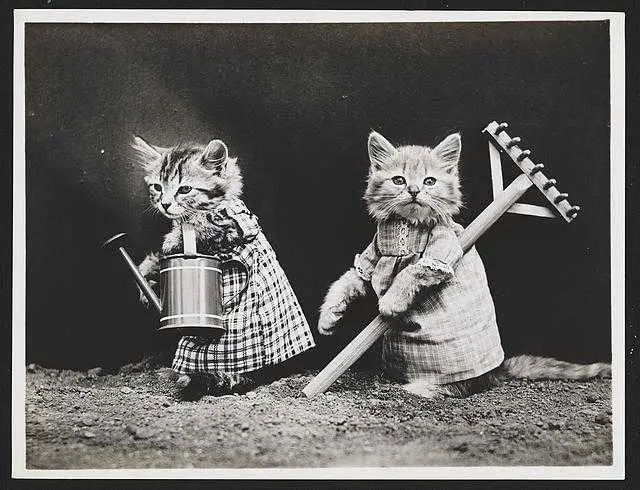
With a little more digging, I discovered that Frees “admitted to using very stiff clothing as well as needles and forks to hold his subjects in place.”2 I think the “needles” might have been pins holding the costumes in place, but still…one must wonder.
Apparently Frees found the work taxing. A Life magazine article from 1937 explained that “The work was challenging, time-consuming and nerve-wracking. It caused Frees so much anxiety that he photographed his furry subjects for only three months a year. To make the situation even more difficult for Frees, only about 30 negatives out of every 100 could be used. Consequently, he needed the remainder of the year to recuperate from exhaustion and formulate new ideas.”3 The article didn’t mention how long his subjects posed for each photo session.
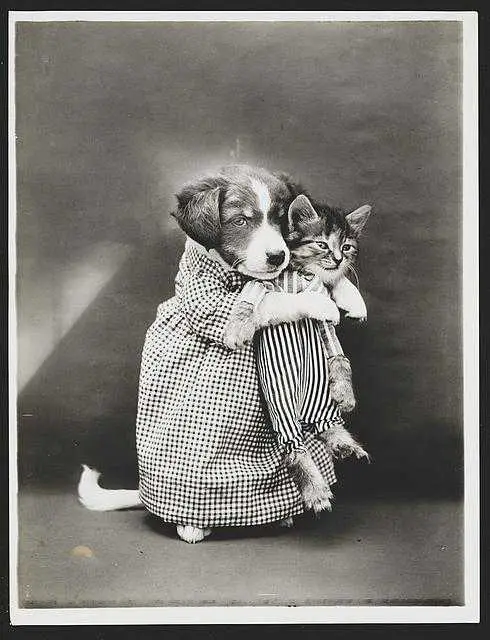
The Life article shared that Frees “rents all models from neighbors, breeders or pet shops.”3 An article from a British magazine, Little Folks, in 1925 told about Frees’ cat Rags, who was the photographer’s favorite model. “Rags possesses an unusual intellect for a cat. He has been known to keep a pose for several minutes without as much as the flicker of a whisker. When the very limit of his endurance has been reached he will give a protesting little murmur. A short romp on the ground, together with a choice bit of meat as a reward, will at once restore him to his former amiability.”4
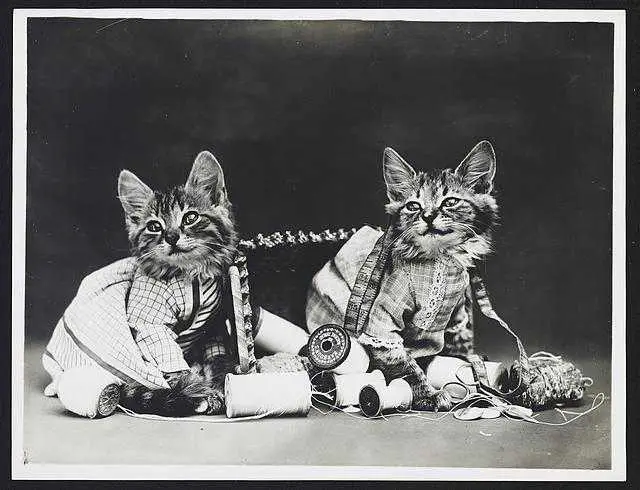
So, am I overreacting to what I see in the photos? Harry Frees worked at a time long before assurances that “no animals were harmed in the making of this” came with our entertainment. Could it be that Rags and his friends enjoyed being propped up with forks and stiff clothing to give humans a laugh? Am I being unfair when these photos occasionally resurface in articles today, but I don’t find them funny as they are compared to modern memes (e.g., LOLCats)?
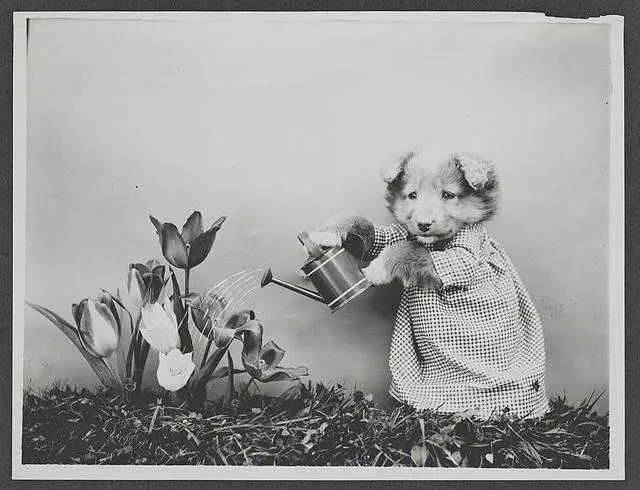
What do you see when you look at these photos—when you look into the eyes of the dog holding a watering can, or the “nurse” holding a kitten in a way no puppy could possibly suspend it?
Sources:
1Taylor, Alan. Cats and Dogs Dressed as People, 100 Years Ago. The Atlantic. 15 May 2014.
2Gilmore, Nicholas. The Cat Meme Photographer from a Century Ago. The Saturday Evening Post. 10 September 2018.
3Weeks, Linton. The Sad, Happy Life of Harry Whittier Frees. NPR, History Department. 6 January 2016.
4Weigley, Mary L. Introducing Harry Whittier Frees, World-Famous Animal Photographer. Pennsylvania Heritage Magazine. Spring 2014.
Photographs:
Frees, H. W., photographer. (ca. 1915) Mischief Makers., ca. 1915. February 2. [Photograph] Retrieved from the Library of Congress, https://www.loc.gov/item/2013648268/. No known restrictions on publication.
Frees, H. W., photographer. (ca. 1914) Watering the Flowers., ca. 1914. June 24. [Photograph] Retrieved from the Library of Congress, https://www.loc.gov/item/2013648297/. No known restrictions on publication.
Frees, H. W., photographer. (ca. 1914) Planting Time., ca. 1914. June 24. [Photograph] Retrieved from the Library of Congress, https://www.loc.gov/item/2013648290/. No known restrictions on publication.
Frees, H. W., photographer. (ca. 1914) The Nurse., ca. 1914. June 24. [Photograph] Retrieved from the Library of Congress, https://www.loc.gov/pictures/item/2013648279/. No known restrictions on publication.
Frees, H. W., photographer. (ca. 1914) Weighing the Baby., ca. 1914. June 24. [Photograph] Retrieved from the Library of Congress, https://www.loc.gov/item/2013648303/. No known restrictions on publication.
– R.A. Kroft
R.A. Kroft writes about her day-to-day journey in living a smaller, more sustainable life and other topics that interest her.

This Site Was Inspired By An Interest in Protecting the Environment:
We had the privilege and joy of learning from Dr. Charlie Stine who instilled a love for the natural world through incredible field trips with the Johns Hopkins Odyssey Certificate program in Environmental Studies. At the time, the program was endorsed by the Maryland Department of Natural Resources. Sadly, after Dr. Stine retired, the program was phased out. We hope that we honor his legacy by shining a bright light on environmental issues and sharing good news about the success of various conservation programs when possible.